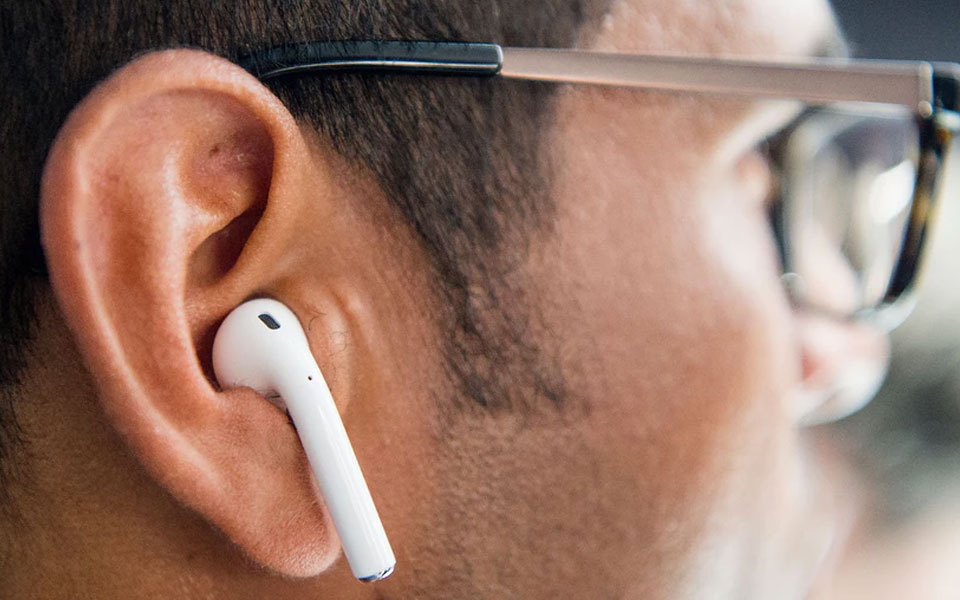Abu Dhabi : Doctors in the UAE are warning people against the use of bluetooth earbuds, which they claim not only causes a risk of sleep distraction and deafness, but also brain cancer.
The wireless/bluetooth headphones, which sell for as high as Dh700, are a serious health hazard and should not be used for longer than a "minute or two" a day, if necessary, said Dr Nasir Nawasreh, specialist - family medicine with subspecialty in acute care at Bareen International Hospital.
"I do not recommend people to use blue tooth headphones - minimal if they have to. The device has to be removed immediately after usage." Dr Nawasreh said researches indicate that brain cancer is one of the major risks the popular device could cause.
He pointed out that bluetooth headphones work by waves that are similar to the microwave, thus "literally cooking the human brain." "The more frequent the wave, the greater the harm. The better quality of sound, the more frequent and harmful the waves are."
The level of waves can cause biological effects by penetrating into the brain and skull.
Dr Nawasreh said researches also indicate that people under the age of 20, who use wireless headphones for more than 25 years, are more prone to developing brain cancer.
"The risk of developing brain cancer in these people is three times higher than the average person."
He said besides the risk of cancer and other effects on brain function, the device's radio-frequency energy could cause severe headaches, sleep disturbance, sleep memory, inflammation and deafness.
"Listening to voices via bluetooth causes the brain to become busier by analysing the sounds or music and it stores what it listens to." Dr Nawasreh stressed that recently, one of his patients became partially deaf due to the usage of bluetooth headphones.
"The patient ended-up having ringing ears and a degree of deafness caused by the usage of wireless headphones. The ear capacity is just like a glass of water, once it's full, the water will spill out."
Moreover, the high frequency waves could also cause side effects on people with pacemakers. He said people with a high risk of developing diseases due to family history or genetic disorders, should stay away from bluetooth headphones.
"This also includes people with chronic ear infections, as well as those with migraines and with a family history of brain tumors."
Dr Rajesh Baby, specialist in neurology, Universal Hospital, said although wireless headphones might be handy for the millions of people who use them globally, long-term exposure to the products could pose a risk on health and safety.
"There are a lot of controversies regarding cancer development and health risks when it comes to using wireless headsets."
He pointed out that lab studies on mice and rats revealed that heavy exposure of cellphone radiation increased the schwannoma of the heart, which is a tumour of the tissue that covers nerves.
The neurologist thus recommends people to put their phones on speaker instead of using bluetooth headphones or directly placing the phone on the ear. "The further away the phone is from the body, the better. The less time spent, the safer the user will be."
courtesy : khaleejtimes.com
Let the Truth be known. If you read VB and like VB, please be a VB Supporter and Help us deliver the Truth to one and all.
Panaji (PTI): As part of a crackdown against tourist establishments violating laws and safety norms in the aftermath of the Arpora fire tragedy, Goa authorities on Saturday sealed a renowned club at Vagator and revoked the fire department NOC of another club.
Cafe CO2 Goa, located on a cliff overlooking the Arabian Sea at Vagator beach in North Goa, was sealed. The move came two days after Goya Club, also in Vagator, was shut down for alleged violations of rules.
Elsewhere, campaigning for local body polls, AAP leader Arvind Kejriwal said the fire incident at Birch by Romeo Lane nightclub at Arpora, which claimed 25 lives on December 6, happened because the BJP government in the state was corrupt.
An inspection of Cafe CO2 Goa by a state government-appointed team revealed that the establishment, with a seating capacity of 250, did not possess a no-objection certificate (NOC) of the Fire and Emergency Services Department. The club, which sits atop Ozrant Cliff, also did not have structural stability, the team found.
The Fire and Emergency Services on Saturday also revoked the NOC issued to Diaz Pool Club and Bar at Anjuna as the fire extinguishers installed in the establishment were found to be inadequate, said divisional fire officer Shripad Gawas.
A notice was issued to Nitin Wadhwa, the partner of the club, he said in the order.
Campaigning at Chimbel village near Panaji in support of his party's Zilla Panchayat election candidate, Aam Aadmi Party leader Kejriwal said the nightclub fire at Arpora happened because of the "corruption of the Pramod Sawant-led state government."
"Why this fire incident happened? I read in the newspapers that the nightclub had no occupancy certificate, no building licence, no excise licence, no construction licence or trade licence. The entire club was illegal but still it was going on," he said.
"How could it go on? Couldn't Pramod Sawant or anyone else see it? I was told that hafta (bribe) was being paid," the former Delhi chief minister said.
A person can not work without bribing officials in the coastal state, Kejriwal said, alleging that officers, MLAs and even ministers are accepting bribes.





